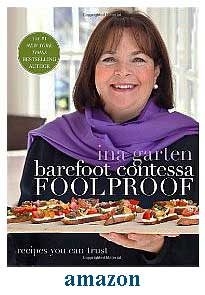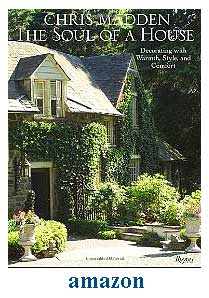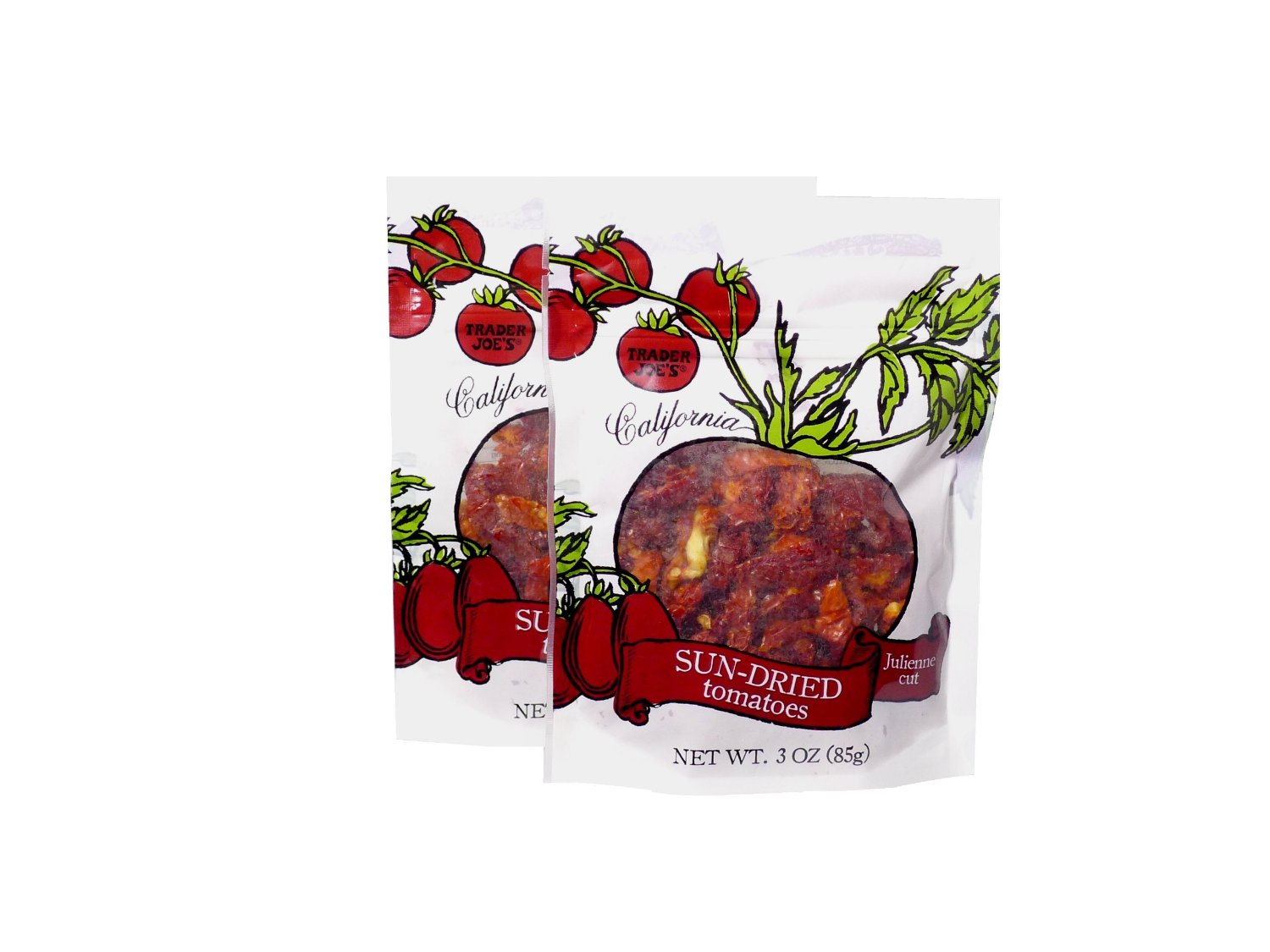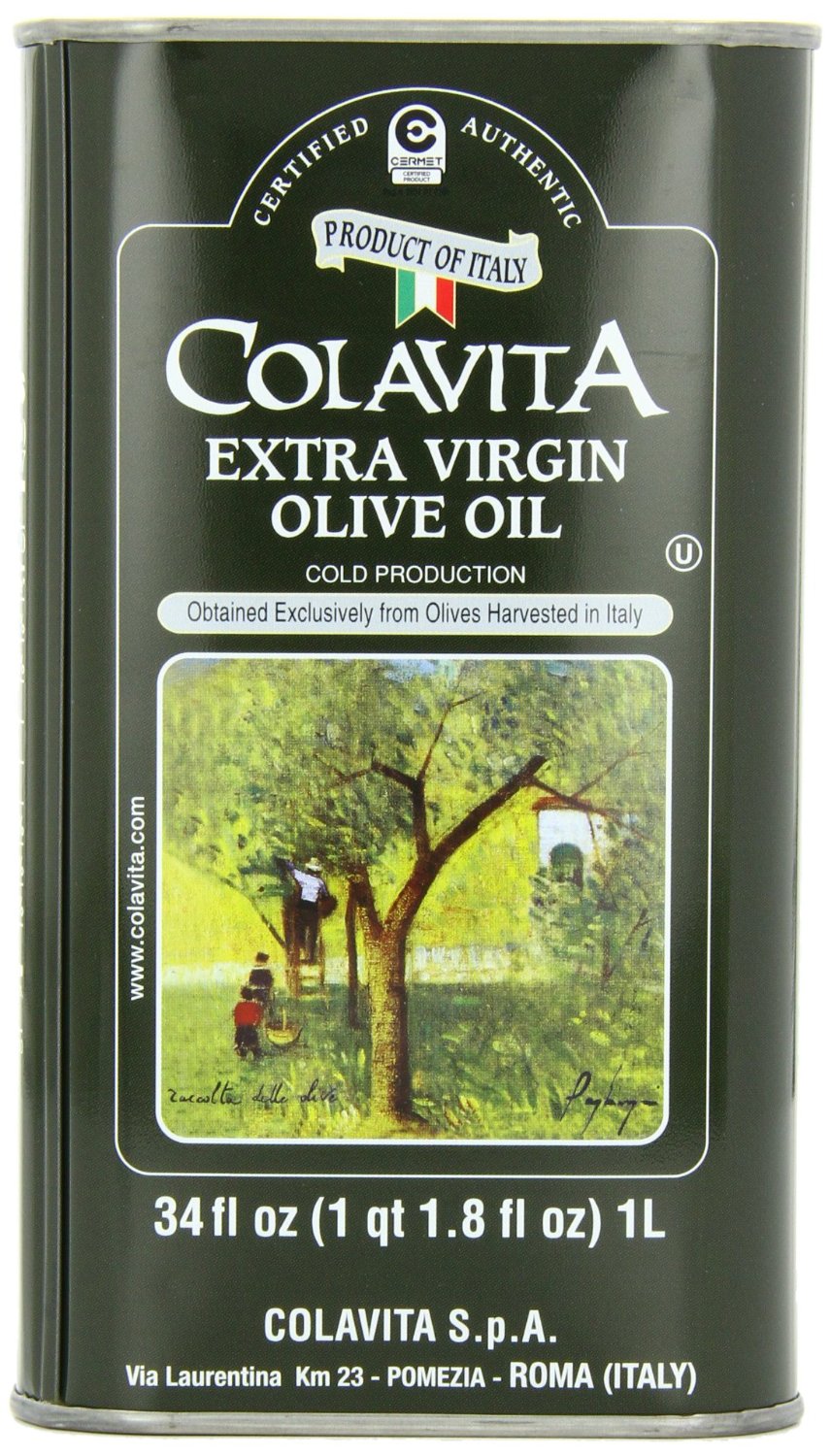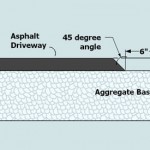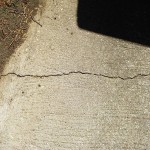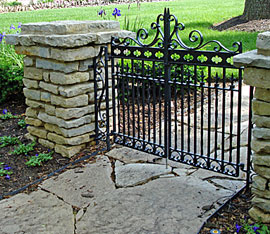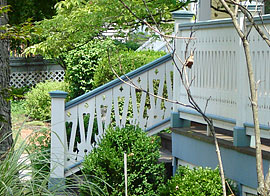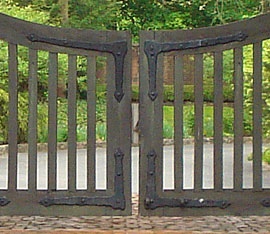If you are planning for some type of outdoor entertaining area with a formal setting, you may be wondering what plants would be used in such a setting. There are indeed specific plants that have traditionally been used for formal settings. Not only are there specific plants, but they are used in specific ways.

Formal settings traditionally have controlled, yet elegant use of color
For illustration purposes, let’s select an outdoor dining/gathering space as the place that you want for your formal area. It will be easier to talk about the plants if we are focused on a specific area. Certain plants can help you achieve a formal character.
First, though, it’s important to understand the underlying basics of a formal setting, and these may not be immediately apparent. Formal settings are actually geometrical in form, and can be thought of as ‘structured’, meaning that they have a defined organization to them, unlike the English garden and its undulating planting beds.
Secondly, the backdrop for a formal setting is neutral, in the sense of color. It will have mid to dark green foliage and groundcover, the neutral colors of the natural materials of the hard surface (i.e. patio), and the planters that are of stone (or stone-like), or wood (painted or stained in rich, subtle tones). We’ll get to color in a minute, but for now you have the basic understanding (geometrical, structured) for your formal setting.
The following plants, and the way they are used, can create a beautiful formal outdoor area.
Shrubs
Boxwood comes to mind first. It is the first and foremost shrub that has been traditionally used to create structured formal settings, and it has been used in many ways. It’s been used to create evergreen ‘walls’ for private outdoor rooms in stately formal gardens (no, you don’t have to have a 10 foot wall to create an outdoor room, and not only that, that would certainly be out of scale for the average yard). It has always been used as the defining framework for formal intricate geometrical gardens of Europe, like the parterre.

A grand entry to outdoor formal dining area from the house ~ boxwood in oversized urns
Here are some of the ways that you can use boxwood. Use a low growing variety (i.e. Littleleaf Boxwood) to create a low formal bordering hedge (2’-3’); if you need a little privacy, use a variety that will grow to a medium height (3’-4’). These bordering hedges are the ‘walls’ that help to define the area, and are typically sheared to create sharp edges and crisp lines for a traditional formal look. A traditional detail for the boxwood hedge is to have it end with a larger form or shape (ball, cone, square) as part of the hedge itself. And for a more elaborate finish, let the end of the hedge sweep into an elegant scroll. If you want a more low maintenance hedge, in terms of less clipping and shearing, choose a variety of boxwood that will have a mature height that comes close to the height that you want your hedge to be. But it has to look tidy, to preserve the formal character!
We love the versatility of boxwood! A single shrub (in a ball or cone shape) can be planted in an elegant oversized planter, urn, or planter box as a specimen plant. Using the plant in this manner, allows the opportunity for a formal accent. Placement of these accents can be very formal in itself – place one on each side of the doorway that opens onto the formal area; place them at the outer corners of the area; and, place one on each side of the ‘entry point’ to the formal area from the casual/informal parts of the yard. These are traditional uses of boxwood in a formal setting.
When you use a single boxwood shrub in the planter, you have set the stage for another type of accent. It can be sheared to create geometrical shapes (sphere, cone – for the cone shape give yourself a head start by using a boxwood with a natural pyramidal habit, like ‘Newport Blue’ or ‘Green Mountain’). Another appropriate shape for a formal setting is a spiral topiary – use the pyramidal habit for this, too.
There are alternatives to the boxwood that can be used for the bordering hedge in a formal setting. These are small-medium size azaleas ( these will give you seasonal blooms, but may only be semi-evergreen) and the smaller cultivars of Japanese holly (this does not have the typical holly leaf). Both are quite similar in habit, and leaf size, appearance and shape.
Trees
Small ornamental trees placed at the corners of the formal area add elegance and help to define the area. Another way to enclose or define the space is by using a line of small ornamentals along one of the perimeter edges. And, depending on the situation, this application can answer the question of ‘what to do with a blank wall’.
A small magnolia (i.e. ‘Betty’) will likely be the right size, in terms of scale, for the average yard. It has a willowy habit and will give you seasonal blooms.

The elegant look of a grafted tree is perfect for a formal setting
A great ‘invention’ in the nursery industry is the grafted ‘tree’. These plants give such an elegant presentation. There are many types of grafted plants that are available. The tree rose is a great example and would be perfect in a formal setting. Other choices of grafted tree forms include lilac, Japanese flowering cherry, hydrangea, cotoneaster, and rose of sharon.
If your climate is right for it, a small lemon tree (ie. Improved Meyer) would give your formal outdoor area an ‘old world’ character.
Groundcover/Vines
Groundcovers can be used to provide a medium to dark green foliage, texture, and can be used as accents.

Ivy ball-and-stem topiary ~ Photo credit: Restoration Hardware
English ivy is perfect for a formal setting. It has such an old character and presence about it. It complements the tradition of the boxwood perfectly. Its 3-pointed leaf offers a contrast to the smaller rounded leaf of the boxwood. Lots of texture! It takes a little maintenance during its growth spurts to keep a tidy appearance. But it can be clicked and shaped without harming it – I know because I have a lot of it in my yard!
It can be used in a number of ways in designing a formal space. You can create a layered effect along the edges of the space by planting a bed of ivy between the bordering hedge of boxwood and the adjacent edge of the hard surface (i.e. terrace, patio).
English ivy is a great plant to create interesting topiary type accents. We have all seen the traditional ball-and-stem topiaries planted in those beautiful oversized planters. These ‘ball-and-stem’ forms have wire baskets along the ‘stem’. The English ivy is planted in the wire baskets to form the ivy ‘balls’. A very elegant look, indeed!
For an alternative groundcover and topiary vine, you could substitute myrtle (Vinca minor). It has shiny oval leaves (shape doesn’t offer much contrast to the boxwood leaf) and a tiny periwinkle color flower when it is in bloom. It is a bit less work as a groundcover than the ivy (ivy is a vigorous grower), but perhaps not as traditional.
Stay behind all the plants during their growing seasons to maintain that clean-edged appearance of a elegant setting.
Create a fabulous entry point from the yard to the formal area, by using a rose shrub (of a vine, or climbing, habit) coupled with a black metal arbor. This gives even more definition to the space, plus adds a sense of privacy and seasonal blooms.
Using a trellis with a flowering vine can also be an elegant solution for a blank wall.
Color
Formal settings traditionally have a controlled use of color. The formal gardens of Europe, or even historically maintained gardens such as Biltmore, in North Carolina, demonstrate the careful and deliberate placement, and grouping of color (flowers).

Color can be added on an arbor at entry point to the formal area from yard
For your formal dining area, with all your greenery in place, now you can add the colors that you love. Splashes of color can be channeled through floral centerpieces for the table, floral displays in the oversized planters, and, using a plant like the tree rose in your design. Add more color with the cushions, pillows, dinnerware, tablecloth, and candles that you use.
Now the main structure of your design has been formed and shaped. Selecting your outdoor furniture with a formal style will complete the deal!




